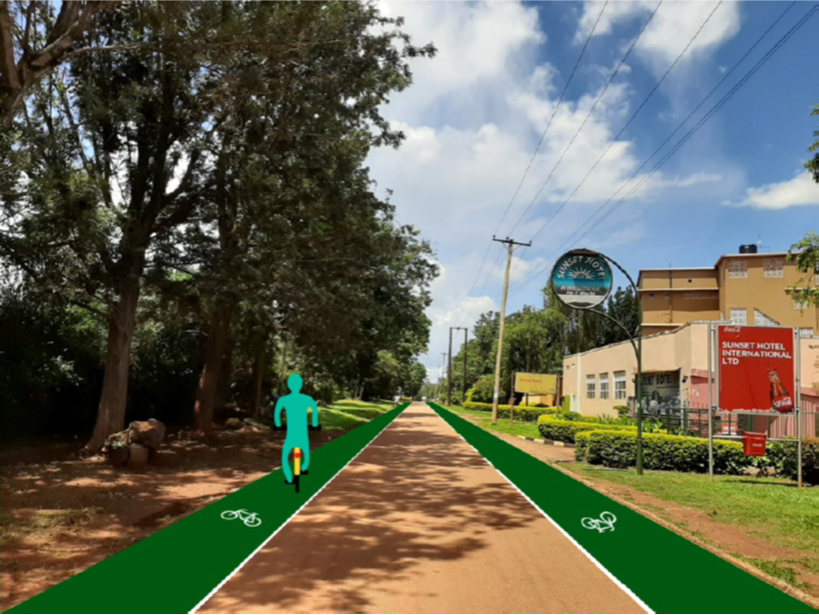Jinja is a city of about 90,000 people in the southeast of Uganda at the Source of the Nile. Like countless other cities around the world, as a result of COVID-19 measures and to combat potential increases in motorized traffic congestion, the City is looking to cycling to potentially provide some solutions. Cycling out of Poverty Foundation (CooP-Africa), in partnership with Mobycon, helped to develop a plan for creating a network of pop-up bike lanes in Jinja, ultimately creating a safe, enjoyable transport option for the city.
Relatively flat and with a pleasant climate, Jinja is well-poised to become a cycling city. However, the bicycle is seen as a tool of poverty and therefore prioritization of investment in cycling has been slow to action at a national level in Uganda. Despite this, however, the numbers of people cycling in Jinja are noticeable, especially during the morning and evening rush. Diverse groups of people are cycling for a variety of reasons, presenting an opportunity to provide a COVID-19 safe transport option.
Combining Dutch and International best-practices, and with an emphasis on establishing a coherent and safe network in light of the lack of existence of cycling infrastructure in Jinja, the report provides the City with the tools to develop their own pop-up cycling network. Using examples like the 650-kms of cycle lanes quickly built in Paris, as well as the temporary network built in the district of Friedrichshain-Kreuzberg in Berlin in just 10 days (as documented and shared in the guide created by Mobycon), a plan was recommended for Jinja.

The proposed network of pop-up bike lanes takes into account 3 key elements:
Low Speed Streets: By selecting and/or designating streets in the network with speeds no higher than 30km/h, the conditions can be safe for all users to cycle comfortably
Bike Lanes as a Statement: Special signage, road treatments and paint delineate space in a road network previous unfamiliar with cycling infrastructure as new, and therefore meant to be treated/approached differently and with caution
Clear Entry Points: Again, because the network will be new and unfamiliar to many current road users, providing safe, clear points of entry to the network improves not only the visibility of the new infrastructure, but also the safety for its users
Of course, infrastructure is only as successful as the awareness of it. Therefore, the report also includes recommendations for encouragement, education and engagement. This includes interventions like a ‘Safe Cycling Map’ and open streets events like the Ciclovia’s in Bógata, Colombia, as well as interventions like education for all road users in schools or at local activities and events and increased parking facilities in the city centre.
With this report, Jinja City has the tools they need to implement a pop-up cycling network, providing safe, physically distanced, and comfortable space for cycling. As they look ahead, this plan may be one of the building blocks they need to continue building out their infrastructure and make cycling in Jinja not just viable, but practical for any journey.
You can support Cycling out of Poverty Foundation and Jinja City by adopting a part of the Bike Lane Network.


No Comments to "Space for Cycling in Uganda: Planning a network of pop-up bike lanes in Jinja, Uganda"